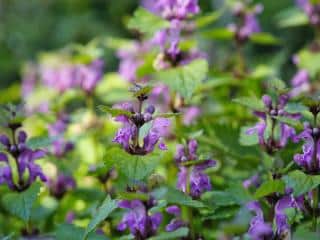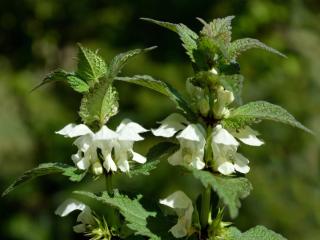

Dead-nettle is an ideal plant for ground cover which is much appreciated for its cute summer blooming and for its elegant evergreen leafage.
Key Dead-nettle facts
Name – Lamium maculatum
Family – Lamiaceae
Type – perennial
Height – 8 to 12 inches (20 to 30 cm)
Exposure – full sun to shade
Soil – rich and well drained
Foliage – deciduous
Flowering – April to June
Whether white, purple or yellow, it is also the perfect choice for forest underbrush and shaded spots. It’s different from other nettles.
 Dead-nettle is planted equally successfully in spring or fall and preferably in cool and rather shade-covered soil.
Dead-nettle is planted equally successfully in spring or fall and preferably in cool and rather shade-covered soil.
 As regards maintenance, this plant is very easy to care for and requires virtually no care at all.
As regards maintenance, this plant is very easy to care for and requires virtually no care at all.
Pruning isn’t necessary in the least, although you can still reach for the pruners in spring if the plant grows too large.
Simply curtail its growth by cutting back drastically, the plant will easily recover.
This plant also goes by the name red nettle or white nettle, referring to the color of its flowers that can be either white, purple or pink depending on the variety. Some species such as Lamium amplexicaule are even considered weeds.
The foliage, which is evergreen and laced with gray or purple, is certainly what makes dead-nettle stand out from among its peers.
The speed with which it will grow and spread makes it a prime choice if you’re hoping for ground cover for edges, to dress a mound, and even in shaded spots such as under a tree or to mulch a shrub hedge.
Dead-nettles are quite resistant in the face of diseases but may sometimes be visited by aphids, slugs and snails.
If the plant grows too fast and far to your taste, feel free to cut extra stems.